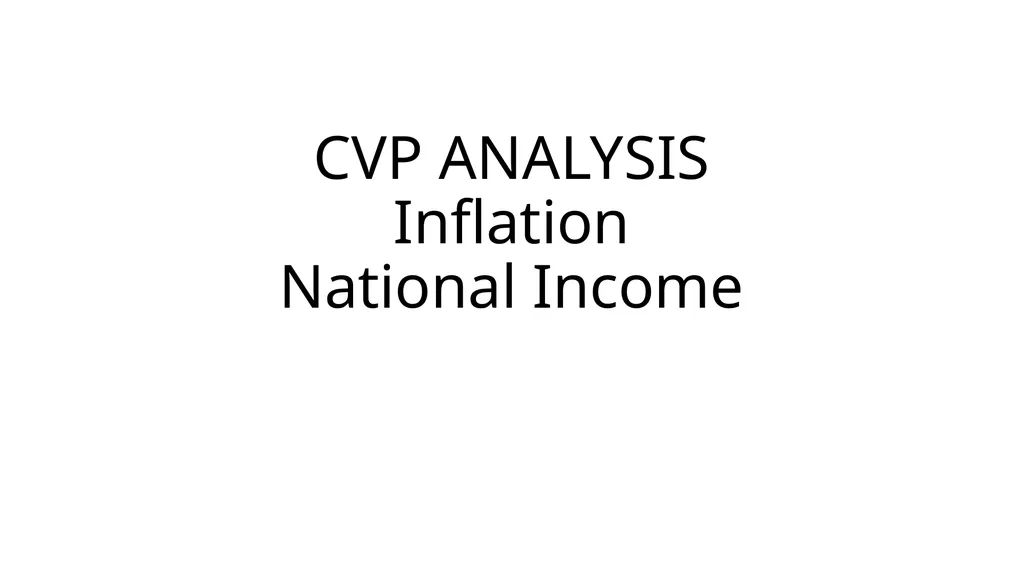CVP ANALYSIS Inflation National Income Inflation
Author : liane-varnes | Published Date : 2025-05-29
Description: CVP ANALYSIS Inflation National Income Inflation Inflation poses a serious threat to the growth momentum Whatever be the cause the fact remains that inflation is something which needs to be tackled with great urgency Dr Manmohan
Presentation Embed Code
Download Presentation
Download
Presentation The PPT/PDF document
"CVP ANALYSIS Inflation National Income Inflation" is the property of its rightful owner.
Permission is granted to download and print the materials on this website for personal, non-commercial use only,
and to display it on your personal computer provided you do not modify the materials and that you retain all
copyright notices contained in the materials. By downloading content from our website, you accept the terms of
this agreement.
Transcript:CVP ANALYSIS Inflation National Income Inflation:
CVP ANALYSIS Inflation National Income Inflation “Inflation poses a serious threat to the growth momentum. Whatever be the cause, the fact remains that inflation is something which needs to be tackled with great urgency …” [Dr. Manmohan Singh, Prime Minister of India, February 4, 2011, New Delhi Inflation Inflation is the rise in the price of goods and services within an economy over a period of time due to which each unit of currency has less purchasing power. It is estimated as the percentage rate of change in price index over the reference time period. Currently in India inflation rate is measured with the help of the Consumer Price Index- combined (Base year- 2010). Till April 2014, the Inflation rate was measured with the help of WPI (Wholesale Price Index). Rate of Inflation= (Current period price index-Reference period price index)/(Reference Period Price Index)×100 Types 1. Creeping Inflation: This occurs when the rise in price is very slow. A sustained annual rise in prices of less than 3 per cent per annum falls under this category. Such an increase in prices is regarded safe and essential for economic growth. 2. Walking Inflation: Walking inflation occurs when prices rise moderately and annual inflation rate is a single digit. This occurs when the rate of rise in prices is in the intermediate range of 3 to less than 10 per cent. Inflation of this rate is a warning signal for the government to control it before it turns into running inflation. Types 3. Running Inflation: When prices rise rapidly at the rate of 10 to 20 per cent per annum, it is called running inflation. This type of inflation has tremendous adverse effects on the poor and middle class. Its control requires strong monetary and fiscal measures. 4. Hyperinflation: Hyperinflation occurs when prices rise very fast at double or triple digit rates. This could get to a situation where the inflation rate can no longer be measurable and absolutely uncontrollable. Prices could rise many times every day. Such a situation brings a total collapse of the monetary system because of the continuous fall in the purchasing power of money. Causes of Inflation Demand-pull inflation is caused by an increase in the conditions of demand. These could either be an increase in the ability to buy goods or an increase in the willingness to do so. Cost-push inflation arises from anything that causes the













